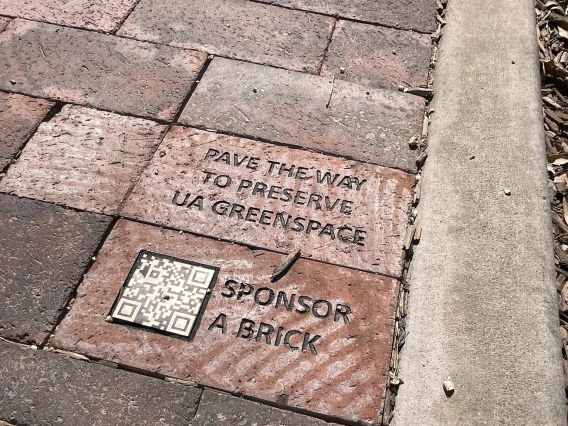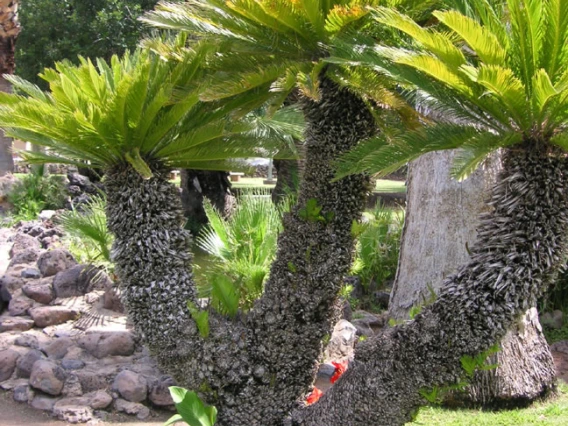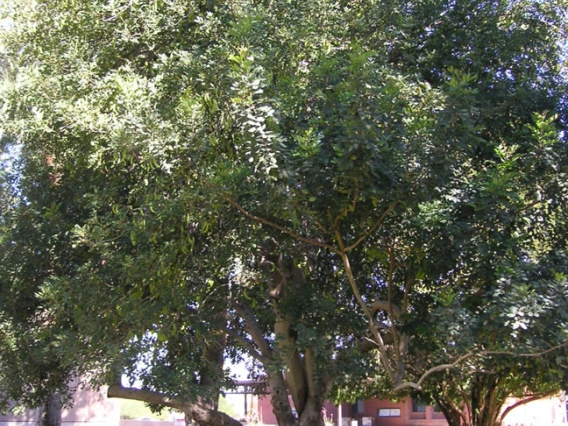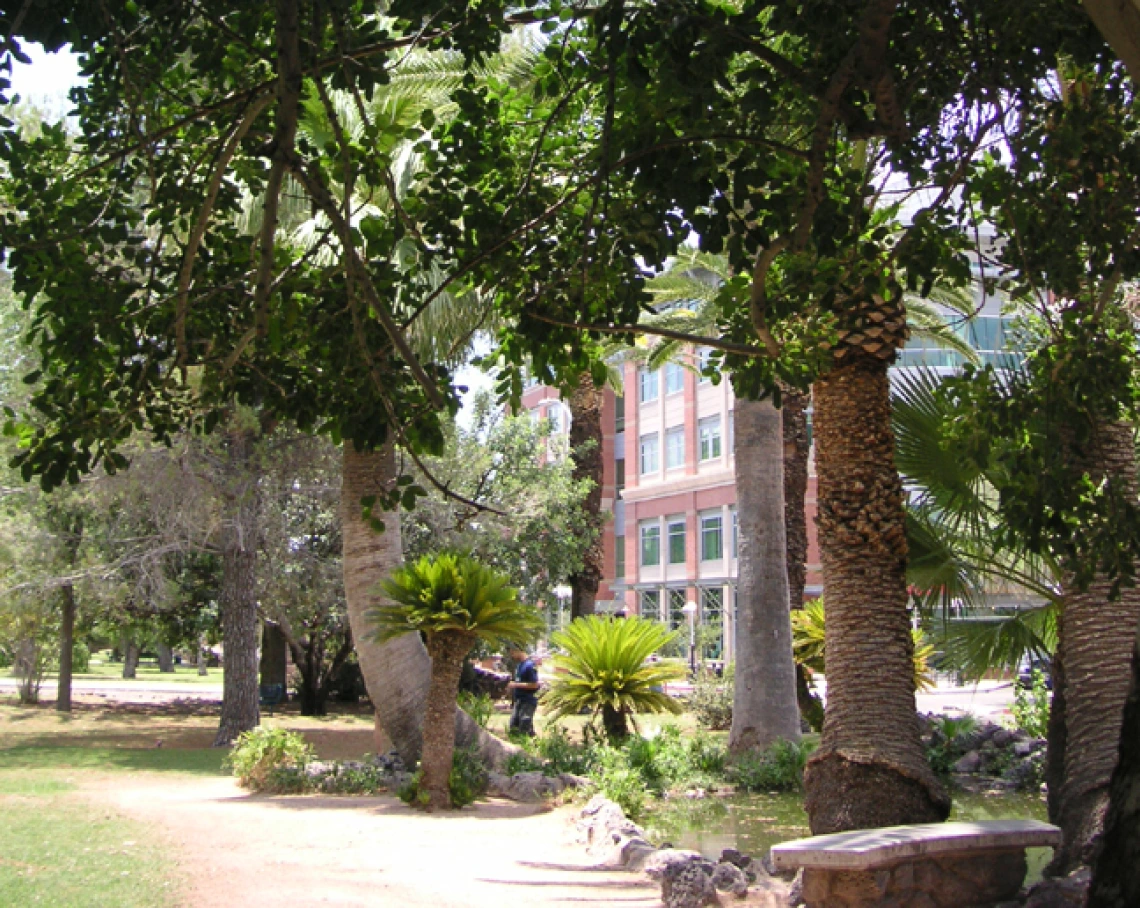The President’s Pond
on the University of Arizona Campus
The President’s Pond, or as it is more commonly known, the Turtle Pond is a water feature and surrounding garden area that occupy the campus property which formerly included the University President’s home. The Queen Anne style home was removed to make room for construction of Gila Hall but the landscape has remained relatively unchanged for many decades. The garden has historically been planted with palms and other lush-looking species to reflect an oasis-feel. Turtles and blue herons have frequented the pond as have many students, faculty, staff, and community neighbors seeking a quiet spot for rejuvenation.
At the University of Arizona, the landscape of the historic core is defined and distinguished by an eclectic collection of elements and plant materials. The plant collection and landscape features all reflect expression of aesthetic, cultural and functional influences spanning many different time periods in which experimentation on the campus grounds was paramount. When the pond was originally constructed, lily ponds were a hallmark of Victorian gardens which sought to replicate the appeal of displays like the Joseph Paxton’s giant Victoria regia lily displayed in an English glass house. During this time period, landscape water features were growing in popularity during the late 1800s. As such, our university’s pond represents a history of global cultural sensitivity, and ongoing innovation, while also continuing to offer a modern welcoming greenspace providing respite from its busy urban setting.
The University of Arizona is committed to the preservation and stewardship of historical, archaeological, cultural, and architectural resources on its main campus and other properties throughout Arizona. As a result of this commitment, the almost 40-acre Historic District was created in 1986, to recognize its historic significance. The district is listed on the National Register of Historic Places and showcases buildings and landscapes dating from 1891 through 1937. The verdant landscapes of the Historic District have been a favorite place for generations of students, staff, and the Tucson community. Features within the landscape, such as the lava rock wall, the Main Gate, and the fish pond are all part of the historic fabric. Within the District and throughout the campus, a world-class collection of desert-adapted plants including a number of Heritage Trees and Great Trees of Arizona are housed.
With funding from the Getty Foundation Campus Heritage Grant Program, Architectural Resources Group (ARG) was retained to complete a Historic Preservation Plan for the University of Arizona in 2005. The plan establishes the framework for preserving historic and cultural campus resources. This document is based on the outline for a historic preservation plan developed by the National Trust for Historic Preservation and the American Planning Association in Preparing a Historic Preservation Plan (1994) by Bradford White and Richard Roddewig. The purpose of the University of Arizona Preservation Plan is to promote historic preservation efforts, inventory campus historic resources, maintain and enhance the historic campus character through the creation of guidelines in keeping with the vision of the Comprehensive Campus Plan.
The University’s Comprehensive Campus Plan calls for enhanced gardens, lawns, courtyards and placing groves of trees for shading, cooling and outdoor comfort and notes that deciduous trees provide seasonally appropriate shade and sun. The plan notes the benefits of green spaces as visually pleasing places to collect water and provide cooling. The Plan acknowledges the importance of the Campus Arboretum in determining plant palette and material choices and calls for botanical and common name labels for both typical and unusual plants. Realization of these worthy goals requires significant investment. Historic landscapes are not static and they require a good deal of management to maintain vigor, and extend longevity. For this reason, The Maintenance Manual for Historic Landscapes was created as an appendix to the Preservation Plan to address issues related to the historic landscape and to further the goals outlined in the Campus Comprehensive Plan.
The UA Campus Arboretum, in partnership with UA Facilities Management have responded to Preservation Plan recommendations to invest in additional grounds staff and training in order to safeguard historic landscapes. However, there is no fund dedicated for the needed improvements described in the Maintenance Manual For Historic Landscapes. For example, the maintenance manual recommends improved seating, preferably seating compatible with the district character, extended plantings of appropriate plantings around the pond’s perimeter, and additional shade on the west side of the pond, however, implementation is delayed due to funding constraints. Given these needs, the UA Campus Arboretum, with seed money supplied by the Tucson Patio Garden Club to draft a concept plan, is seeking sponsors to implement the proposal and revitalize this historic campus site.
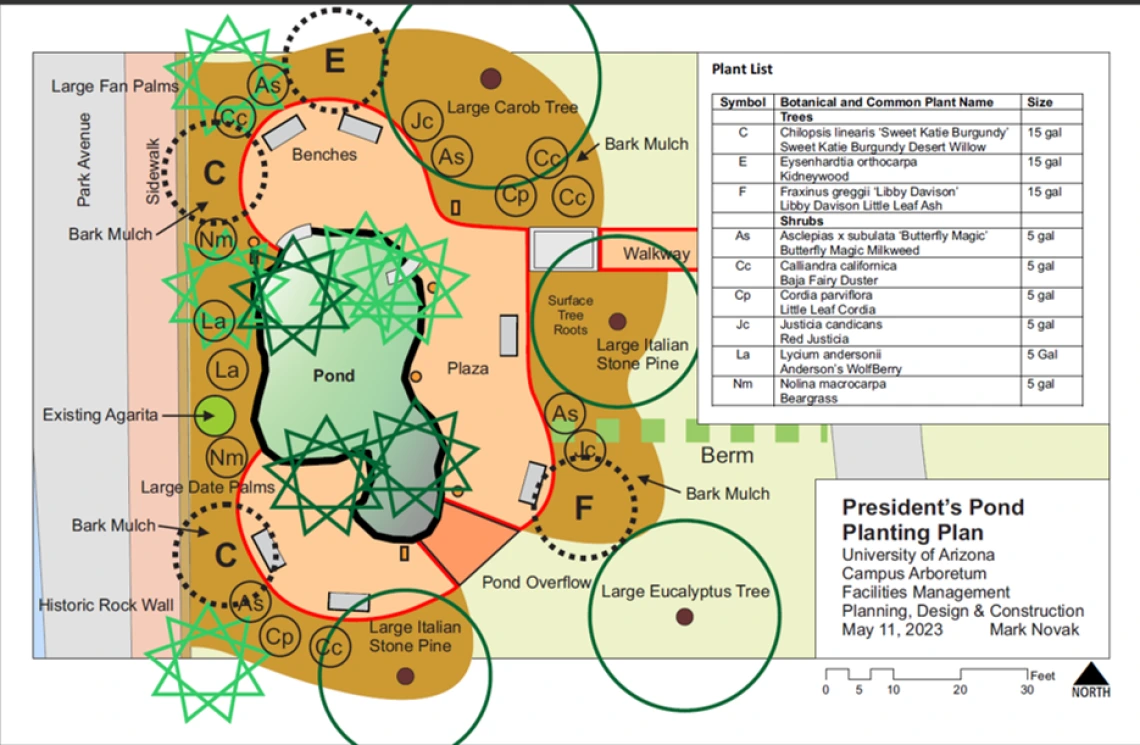
Preserve the pond with a gift to the Campus Arboretum.
Gifts of $20K are recognized with a sponsorship bench and custom inscribed plaque, while gifts of $250 are recognized with a custom engraved brick in the path.





